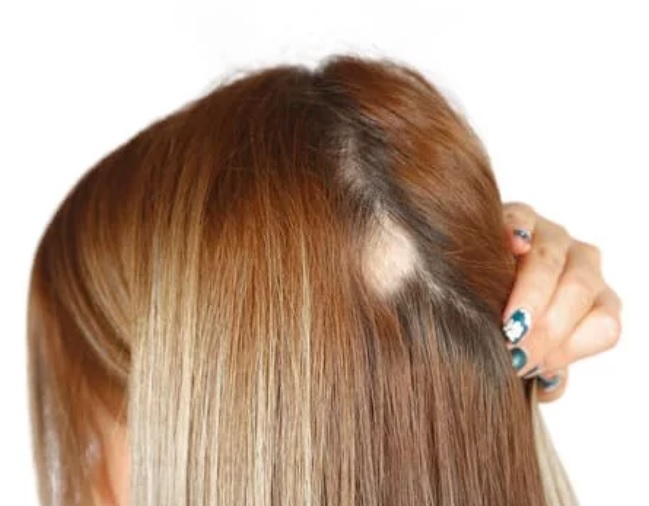
What is Traction Alopecia?
Traction alopecia is a self-inflicted form of hair loss caused by repeatedly pulling on the hair. This pulling can occur due to certain hairstyles that put constant tension on the hair follicles, such as tight ponytails, braids, cornrows, or hair extensions. The constant pulling can damage the hair follicles, leading to hair loss over time.
This condition is most common in individuals who frequently wear tight hairstyles, such as women who wear weaves or extensions, or individuals who regularly use tight rollers or hair clips. It can also affect men who wear tight hats or headgear regularly.
Symptoms of Traction Alopecia
Symptoms of traction alopecia include thinning hair, hair loss along the hairline, or bald patches, typically in areas where the hair is pulled tightly. If the pulling is stopped early enough and the hair follicles are not permanently damaged, the hair may regrow. However, if the pulling continues over an extended period, the hair loss may become permanent.
How to prevent Traction Alopecia
Preventing traction alopecia involves avoiding hairstyles that put excessive tension on the hair follicles. This may involve wearing looser hairstyles, avoiding tight braids or ponytails, and giving the hair time to rest between styling.
If traction alopecia has already occurred, it’s essential to stop the pulling and allow the affected area to recover. In some cases, medical treatments such as topical medications or hair transplant surgery may be necessary to restore hair growth.
Treatment for Traction Alopecia
The treatment for traction alopecia depends on the severity of the condition and the extent of hair loss. Here are some approaches commonly used:
Stop the Traction: The first step in treating traction alopecia is to stop the repetitive pulling or tension on the hair follicles. This may involve changing hairstyles, avoiding tight braids, ponytails, or hair extensions, and giving the hair time to rest and recover.
Topical Treatments: Certain topical treatments may help stimulate hair growth and improve the condition of the scalp. These may include minoxidil, which is a topical medication approved by the FDA for promoting hair regrowth. Minoxidil works by increasing blood flow to the scalp and stimulating hair follicles. It’s available over-the-counter in various formulations.
Corticosteroid Injections: In some cases, corticosteroid injections into the affected areas of the scalp may be recommended to reduce inflammation and promote hair regrowth. This treatment is typically administered by a dermatologist.
Platelet-Rich Plasma (PRP) Therapy: PRP therapy involves injecting the patient’s own platelet-rich plasma into the scalp to stimulate hair follicles and promote hair growth. PRP contains growth factors that can potentially improve the health and function of hair follicles. However, more testing and research is needed in order to know the exactly effectiveness of PRP.
Hair Transplant Surgery: In cases where traction alopecia has caused significant hair loss that cannot be reversed through other treatments, hair transplant surgery may be an option. During this procedure, hair follicles from a donor site (typically the back of the scalp) are transplanted into the affected areas. Hair transplant surgery can provide permanent results, but it’s essential to consult with a qualified surgeon to determine if you’re a suitable candidate.
Specialist Hair Supplement: There are various specialist hair supplements on the market that claim to promote hair growth and reduce hair loss. While many of these supplements contain vitamins, minerals, extracts, and other nutrients that are important for hair health, it’s essential to approach them with caution and consult with a healthcare professional before starting any new supplement regimen. The leading hair specialist supplement on the market is HR23+, with 9 out of 10 female users noticing visible improvements in their hair.
Summary
If you are still unsure about how to best tackle traction alopecia, then it could be worth consulting with a dermatologist or a healthcare professional who specialises in hair loss, to determine the most appropriate treatment plan for your specific condition.
Treatment outcomes can vary depending on factors such as the extent of hair loss, the underlying cause of traction alopecia, and individual response to therapy. Early intervention and discontinuation of the hairstyles causing traction are crucial for preventing further hair loss and promoting regrowth.

